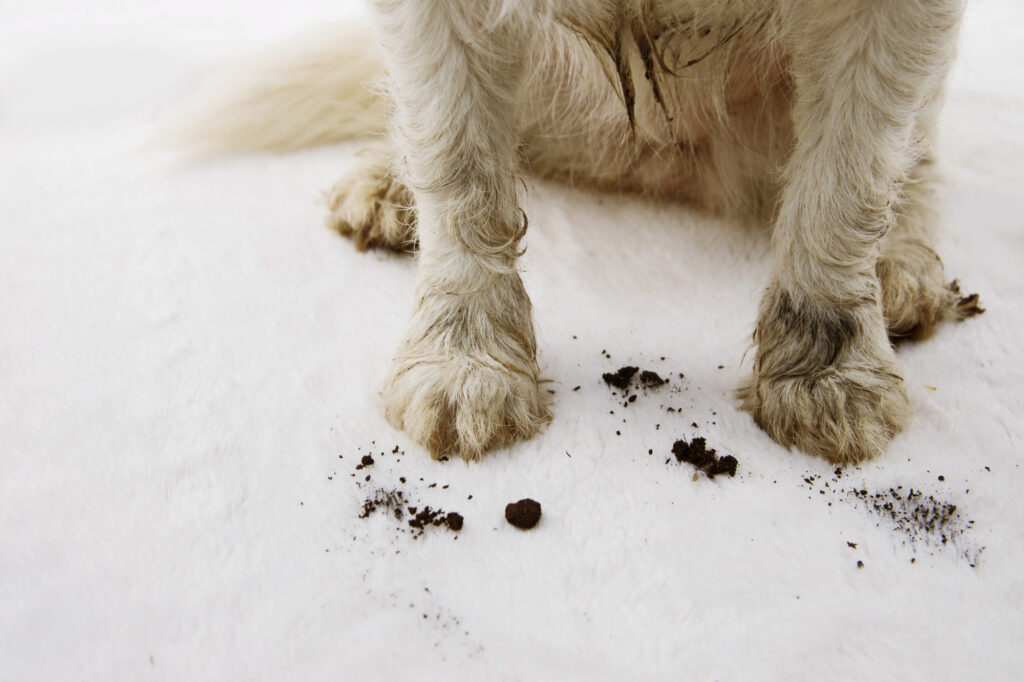Over 85 million houses in America own pets, and the joy they bring is undeniable. However, the messes they create, particularly on carpets, can be a challenge.
Pet stains on carpets require special care for effective removal. Here’s your guide to safeguarding your carpets from pet-related issues.
The Challenges of Pet Stains on Carpets
Pet stains can result in lingering odors and are often hard to eliminate. They can also attract additional dirt and bacteria, making the affected area unsanitary. Moreover, these stains can discolor and weaken carpet fibers, reducing the carpet’s lifespan. Keeping your carpet clean is essential for a healthy living environment.
Identifying Types of Pet Stains
Knowing the type of stain you’re dealing with helps in choosing the right cleaning solution. Common pet stains include:
- Urine: Typically leaves a yellowish stain and a strong odor, and can damage carpet fibers if not treated promptly. Best treated with an enzymatic cleaner that breaks down the ammonia and proteins in urine, reducing odor and stain.
- Vomit: Often acidic, vomit can cause discoloration and odor, and may contain food dyes that further stain carpets. A mixture of baking soda and water or a mild detergent is effective, as it neutralizes acidity and helps lift the stain.
- Saliva: Usually leaves a light mark, but can attract dirt leading to more noticeable staining over time. A gentle, soap-based cleaner or a mixture of vinegar and water can effectively remove saliva stains without damaging the carpet.
- Feces: Can leave significant stains with both visual and olfactory impact, and may be harder to remove if it sets. An enzymatic cleaner is ideal, as it can break down organic matter and odors, making the stain easier to remove.
At-Home Remedies
Depending on the type and amount of stain present, some pet owners may prefer to handle their own spot removals. This is fine, as long as you are using the correct methods to avoid further damaging your carpets. Unsanitary carpets can be a breeding ground for bacteria and cause health problems.
Blotting or Scraping
Urine/Vomit/Saliva: Immediately blot the stain with a white towel, pressing firmly to absorb as much liquid as possible. Avoid rubbing to prevent the stain from spreading.
Feces: Gently scrape up any solid residue with a plastic spoon, then blot any remaining moisture with a towel.
Vacuuming
After blotting/scraping, vacuum the area to remove any loose particles. This is particularly helpful for dry stains or post-baking soda application.
Acidic Solutions (Vinegar or Lemon Juice):
Mix equal parts of white vinegar (or lemon juice) and water. Apply the solution to the stain, let it sit for 5-10 minutes, and then blot dry. Ideal for urine and vomit stains.
Baking Soda
After blotting the stain, sprinkle a generous amount of baking soda over it. Let it sit for a few hours or overnight to absorb moisture and odor. Vacuum up the baking soda.
Use Hydrogen Peroxide
Mix a solution of ½ cup of Hydrogen peroxide with 1 teaspoon of dish soap. Apply it to the stain, wait for 5 minutes, then blot up the solution. This is particularly effective for tougher stains like urine or feces.
Note: Apply your solution of choice in small amounts so as not to saturate the carpet. Use a mild brush or sponge, if necessary, but always scrub gently in order not to damage delicate fibers. Remember, don’t forget to perform a spot test with these solutions on a hidden area of the carpet to ensure they don’t cause discoloration. Additionally, for more severe or set-in stains, it may be necessary to repeat these processes or consult a professional.
Washable Area Rugs
While they may seem daunting, area rugs are not any more of a challenge than a carpet.
First, remember to check the product labels and tags for specific cleaning instructions based on the fiber content of your rug. Most of the DIY methods above will work just as well with an area rug as they will with a fixed carpet, so after you have chosen a method to clean your rug, simply follow the steps above.
After you have finished, let the area rug dry before placing it back in place. This is very important if the floor underneath is wooden or laminate, as moisture can cause warping or discoloration over time.
Why Opt for Professional Cleaning?
Knowledge and experience
Professional carpet cleaners have years of knowledge and experience in dealing with all sorts of pet stains. They understand what types of solutions work best for different kinds of fibers. They also know how to ensure complete spot removal without carpet damage.
Specialized Tools
Professional cleaners will use specialized tools such as industrial vacuums and wet-steam extractors that aren’t available to most homeowners. These tools provide superior suction and deeper cleaning power than traditional vacuums. This makes them better suited for tackling tough spots.
They often use cleaning solutions that are not harmful to the environment. They won’t leave behind harsh chemicals or odors.
Guaranteed Results
Hiring a professional cleaner means you get guaranteed results. If the stains reappear after treatment, the job isn’t done until it’s done right. Reputable companies will stand behind their work with warrants or satisfaction guarantees so your carpets always look their best.
When it comes to removing pet stains from carpets, it pays to hire a professional. Experienced pros get better results, and offer peace of mind knowing you’re taking care of your investment.
The Challenges of Pet Stains on Carpets
Pet stains can result in lingering odors and are often hard to eliminate. They can also attract additional dirt and bacteria, making the affected area unsanitary. Moreover, these stains can discolor and weaken carpet fibers, reducing the carpet’s lifespan. Keeping your carpet clean is essential for a healthy living environment.
Identifying Types of Pet Stains
- Limited Access: Limit your pet’s access to carpeted areas and regularly use a lint brush or vacuum to remove fur and dander.
- Training: Teach your pets where they can and can’t go to the bathroom inside the house. Establish a routine for outdoor potty breaks and reward good behavior.
- Exercise: Regular physical activity can help prevent indoor accidents by reducing your pet’s need to find alternative spots for relief.
- Designated Potty Areas: Keep indoor litter boxes or potty patches clean and easily accessible.
- Use Covers & Mats: Place these in high-traffic areas frequented by your pet to protect the carpet from dirt and spills.
About Hammond Knoll
At Hammond Knoll, we’re not just any carpet cleaning service; we’re your local experts. Proudly serving the South Puget Sound and Western Washington areas—including greater Tacoma, Puyallup, Seattle, Gig Harbor, Olympia, and Lacey—we specialize in tackling the most stubborn pet stains on your carpets. With a variety of specialized tools and eco-friendly cleaning solutions, we offer warranties to assure quality results. Don’t hesitate to contact us today for any and all of your cleaning needs; from carpet to upholstery, you can trust us for a job well done.

